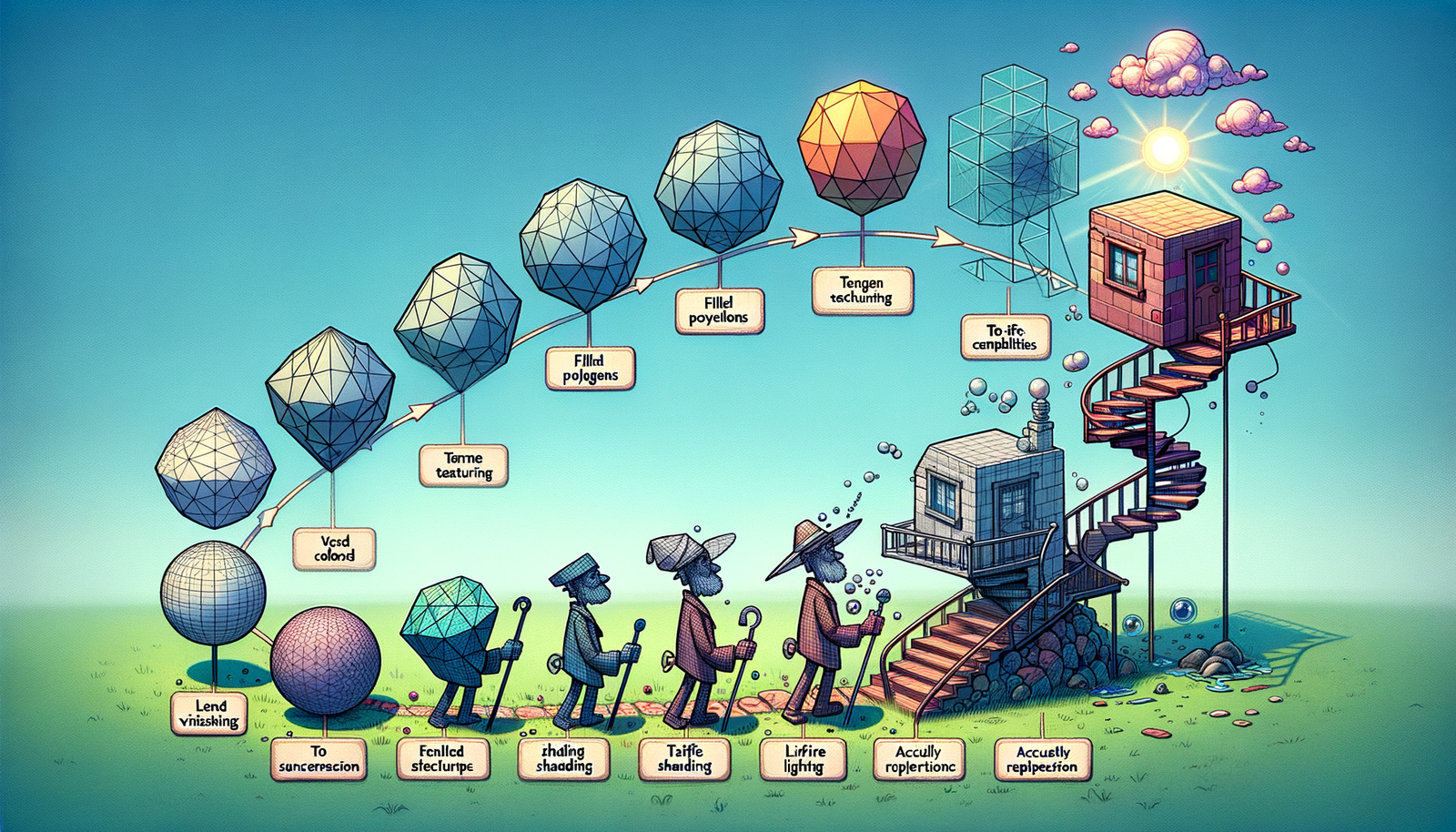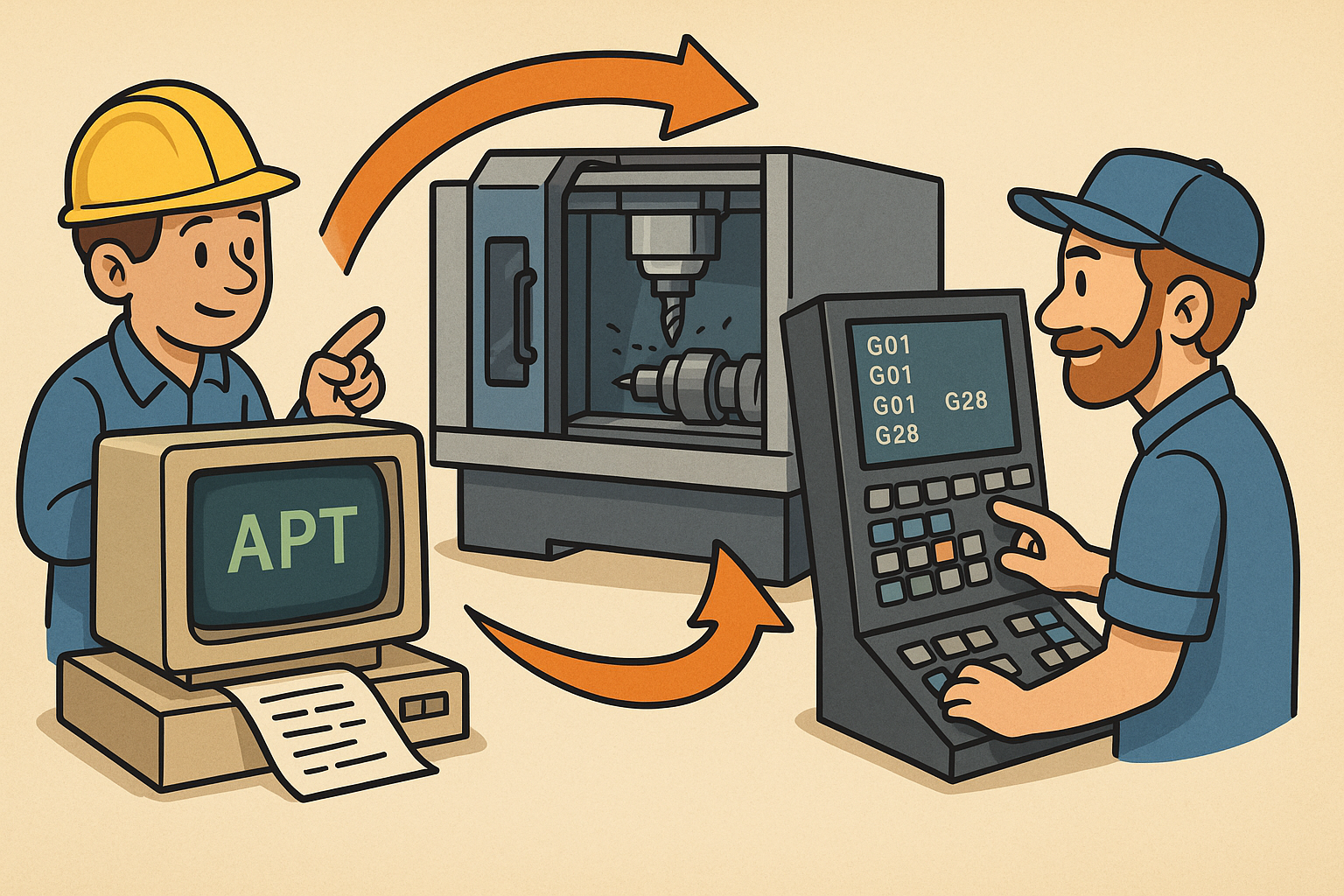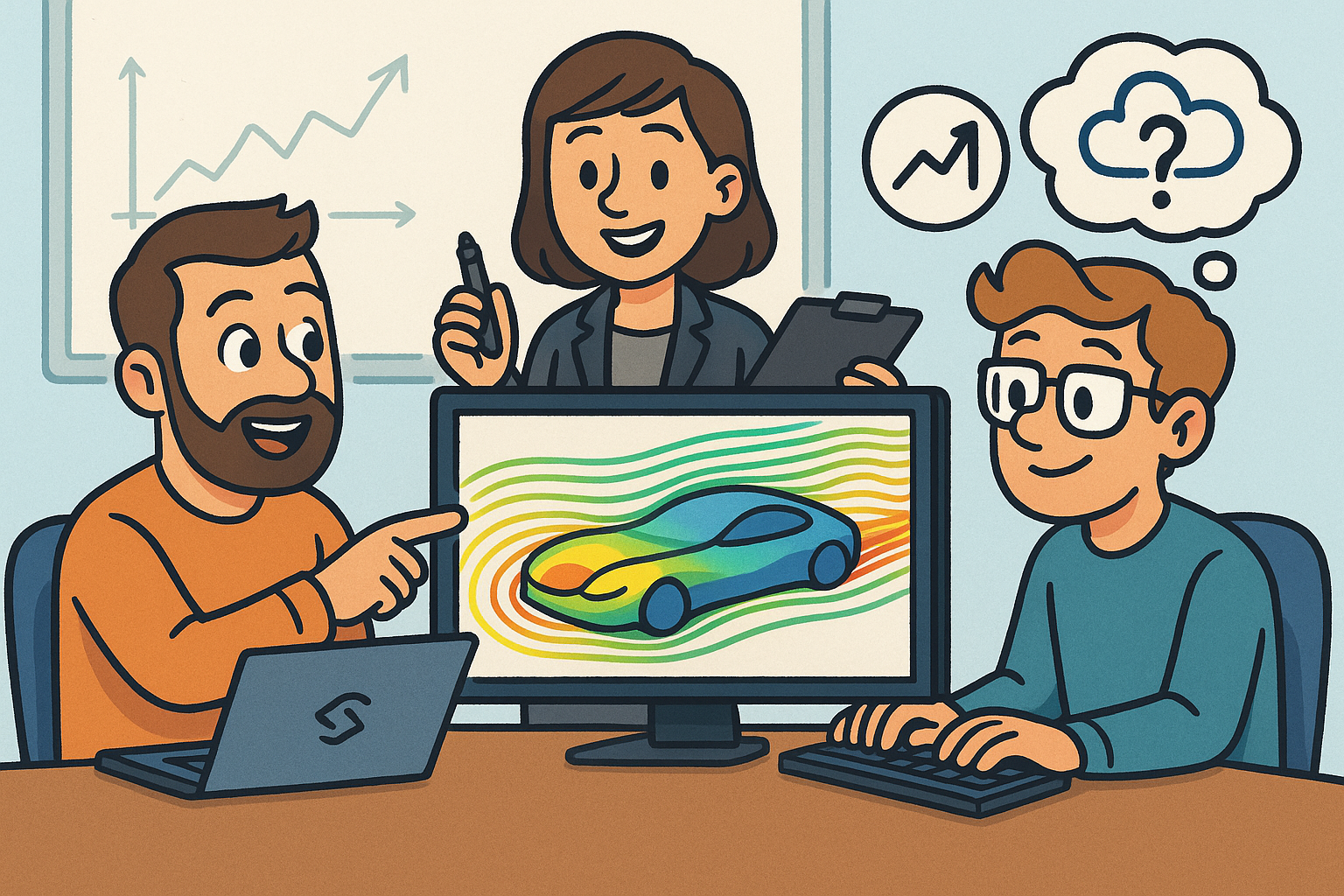Your Cart is Empty
Customer Testimonials
-
"Great customer service. The folks at Novedge were super helpful in navigating a somewhat complicated order including software upgrades and serial numbers in various stages of inactivity. They were friendly and helpful throughout the process.."
Ruben Ruckmark
"Quick & very helpful. We have been using Novedge for years and are very happy with their quick service when we need to make a purchase and excellent support resolving any issues."
Will Woodson
"Scott is the best. He reminds me about subscriptions dates, guides me in the correct direction for updates. He always responds promptly to me. He is literally the reason I continue to work with Novedge and will do so in the future."
Edward Mchugh
"Calvin Lok is “the man”. After my purchase of Sketchup 2021, he called me and provided step-by-step instructions to ease me through difficulties I was having with the setup of my new software."
Mike Borzage
Design Software History: The Evolution of Visualization Techniques in Design Software: From Wireframe to Real-Time Rendering
November 09, 2024 6 min read


Introduction to Visualization Techniques
Visualization in design software refers to the graphical representation of objects, concepts, or data to aid in understanding, analysis, and communication within the design process. It plays a pivotal role in transforming abstract ideas into concrete visual forms that can be manipulated, tested, and shared. From the early days of design, visualization has been essential in bridging the gap between conceptualization and realization, allowing designers to experiment with shapes, structures, and functionalities before committing to physical prototypes. Historically, visualization techniques have evolved significantly, reflecting advancements in computational power, graphics algorithms, and user interface design. The journey from simple 2D wireframe models to sophisticated 3D representations marks a transformative period in design software history. Initially, designers relied on basic line drawings and sketches to convey ideas, which, while effective to a degree, lacked depth and realism. The advent of wireframe modeling provided a skeleton framework to represent three-dimensional objects in two dimensions, laying the foundation for more advanced visualization techniques. As technology progressed, these wireframe models evolved into fully rendered 3D models, incorporating textures, lighting, and shading to create lifelike representations. This transition not only enhanced the visual appeal but also improved the accuracy and efficiency of the design process, enabling more complex and innovative creations. The evolution of visualization techniques reflects the industry's commitment to enhancing design fidelity, improving user experience, and pushing the boundaries of what is possible within design software environments.
The Evolution of Visualization Technologies
The evolution of visualization technologies in design software has been marked by significant milestones, each contributing to the enhanced capability and realism of digital models. In the early years, wireframe models were the standard. These models, consisting of lines and curves connected to represent the edges of objects, were groundbreaking at the time. One of the pioneers in this field was Ivan Sutherland with his development of Sketchpad in 1963. Sketchpad was one of the first programs to utilize a graphical user interface and allowed for the creation and manipulation of objects on a screen using a light pen. This innovation laid the groundwork for future computer-aided design (CAD) systems.
The transition to solid modeling marked a significant leap forward. Software like Autodesk's AutoCAD, introduced in 1982, revolutionized the industry by enabling the creation of more complex and precise models. AutoCAD provided tools for both 2D and 3D design, allowing designers to create detailed solid models. SolidWorks, introduced in 1995 by Dassault Systèmes, further advanced solid modeling by providing a user-friendly interface and powerful features that made 3D modeling more accessible to engineers and designers. These advancements allowed for more accurate simulations and analyses, leading to better-designed products and structures.
Advancements in rendering techniques also played a crucial role in the evolution of visualization. Rasterization and scan-line rendering techniques improved the way images were generated on screens. Early rendering methods were limited by hardware capabilities, resulting in less detailed images. The introduction of shading methods such as Flat, Gouraud, and Phong shading significantly enhanced image quality. Flat shading applied a single color to each polygon, while Gouraud shading calculated vertex colors and interpolated them across surfaces, producing smoother transitions. Phong shading went a step further by interpolating normals across surfaces, resulting in more realistic lighting and reflections. These techniques improved the visual realism of models, making them more useful for analysis and presentation.
- Flat Shading: Assigns a single color to each polygon, resulting in a faceted look.
- Gouraud Shading: Calculates colors at vertices and interpolates them over the surface, smoothing the appearance.
- Phong Shading: Interpolates normal vectors across surfaces for realistic lighting effects.
Hardware advancements significantly impacted rendering speed and quality. The development of graphics processing units (GPUs) allowed for faster computations and more complex rendering tasks. Companies like NVIDIA and AMD have been at the forefront of GPU technology, introducing powerful graphics cards that handle sophisticated rendering algorithms efficiently. These hardware improvements enabled real-time rendering of detailed models, which was previously unattainable. Designers could now interact with their models dynamically, making changes and seeing immediate visual feedback, which greatly enhanced the design process.
The Shift to Real-Time Rendering
The shift to real-time rendering marked a paradigm shift in visualization techniques within design software. Real-time rendering enables the instantaneous generation of images from 3D models, allowing users to interact with designs in a fluid and dynamic manner. This transformation was significantly influenced by advancements in the gaming industry, particularly through the development of powerful game engines like Unity and Unreal Engine. These engines, initially created to build immersive gaming experiences, provided robust platforms capable of handling complex graphics and physics simulations in real time. Recognizing their potential, industries outside gaming began adopting these tools for design visualization.
The role of engines like Unity Technologies' Unity and Epic Games' Unreal Engine has been pivotal. Unity, introduced in 2005, offered a versatile platform that supported multiple operating systems and devices, making it accessible for various applications beyond gaming, including architectural visualization and product design. Unreal Engine, with its high-fidelity graphics capabilities, became a preferred choice for projects requiring photorealistic rendering. The adoption of these engines in architecture allowed architects to create interactive walkthroughs of buildings before construction, enhancing client engagement and design validation. In product design, real-time rendering facilitated rapid prototyping and user testing by providing realistic visualizations of products in development.
Emerging technologies have continued to push the boundaries of real-time rendering. The influence of ray tracing technology has been particularly significant. NVIDIA's introduction of RTX GPUs brought real-time ray tracing capabilities to the mainstream. Ray tracing simulates the way light interacts with objects, producing highly realistic images with accurate reflections, refractions, and shadows. This technology, previously limited to non-real-time applications due to its computational intensity, became accessible for interactive applications thanks to NVIDIA's advancements. The implications are profound, as designers can now achieve near-photorealistic renderings in real time, greatly enhancing the visualization quality.
The integration of augmented reality (AR) and virtual reality (VR) technologies has further enhanced user experience in visualization. AR overlays digital information onto the real world, while VR immerses users in a fully virtual environment. Companies like Oculus (acquired by Facebook) and HTC have developed VR headsets that allow users to step inside their designs and experience them at scale. AR applications, powered by devices like Microsoft's HoloLens, enable designers to visualize and manipulate models within a physical space. These technologies improve spatial understanding and allow for more intuitive interactions with designs.
- Augmented Reality (AR): Enhances the real world with digital overlays, useful for on-site visualization.
- Virtual Reality (VR): Creates immersive virtual environments for comprehensive exploration of designs.
Cloud computing has also played a crucial role in advancing real-time rendering capabilities. By leveraging cloud resources, designers can perform complex rendering tasks without the need for powerful local hardware. Companies like Autodesk with their BIM 360 platform and Dassault Systèmes with their 3DEXPERIENCE platform have integrated cloud services to facilitate real-time collaboration and computation. This allows teams distributed across different locations to work simultaneously on the same models, streamlining the design process and improving efficiency.
Conclusion
The journey of visualization techniques in design software reflects a continuous pursuit of realism, efficiency, and innovation. From the inception of wireframe models in pioneers like Ivan Sutherland's Sketchpad to the sophisticated real-time rendering technologies of today, each advancement has built upon the last to enhance the designer's ability to conceptualize and communicate ideas. The importance of continuous innovation cannot be overstated, as it drives the development of tools that expand the possibilities of design. The integration of game engines, the emergence of ray tracing, and the adoption of AR and VR technologies have collectively transformed the landscape of design visualization, making it more interactive and immersive than ever before.
Looking forward, emerging trends such as AI-driven rendering and further integration of immersive technologies promise to push the boundaries even further. Artificial intelligence and machine learning algorithms are being integrated into rendering engines to automate and optimize rendering processes, leading to faster and more accurate results. Companies are exploring ways to make visualization not only more realistic but also more intelligent, with systems that can predict and enhance designs. The future of visualization in design software is poised to become even more dynamic, interactive, and essential in bringing innovative ideas to life.
Also in Design News

Design Software History: APT to G‑Code Dialects: The Evolution and Persistence of Vendor‑Specific CNC Post‑Processing
January 06, 2026 11 min read
Read More
Real-time CFD for Design Reviews: Progressive Solvers, GPU Pipelines, and Uncertainty-Aware Collaboration
January 06, 2026 12 min read
Read More
Cinema 4D Tip: Weight Manager Workflow for Fast, Stable Character Skinning
January 06, 2026 2 min read
Read MoreSubscribe
Sign up to get the latest on sales, new releases and more …


